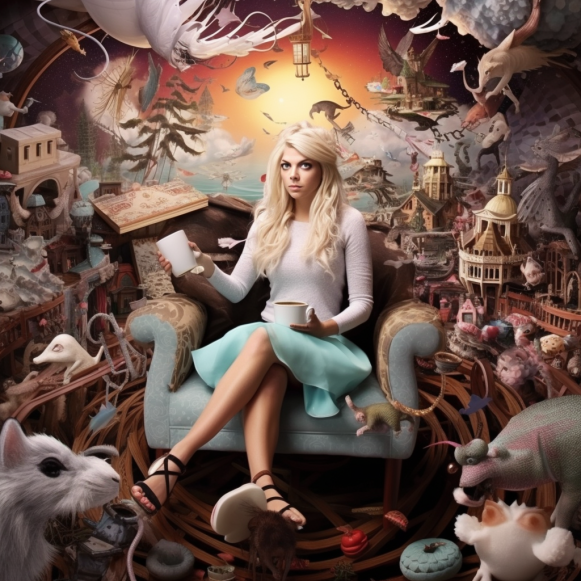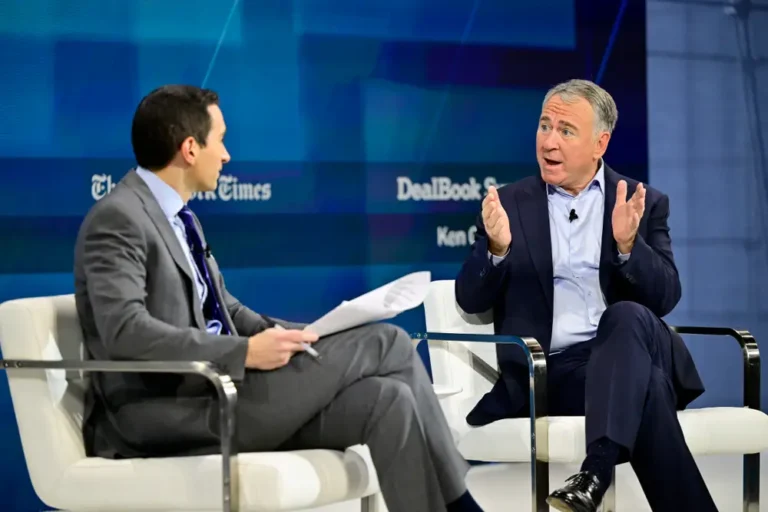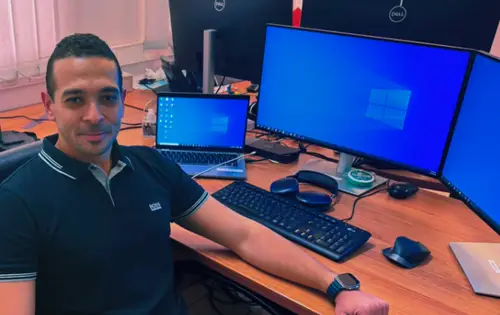My YouTube channel makes up to $1 million in ad revenue a month. Here’s how I went from producing free videos for other creators to 14 million subscribers of my own.

- Rebecca Zamolo has over 14 million subscribers on YouTube and over 17 million followers on TikTok.
- Zamolo talks about how she got started on YouTube and built her first 1 million subscribers.
- She also shares how she used Musical.ly, a now-defunct music-video app, to build her audience.
This essay is based on a conversation with Rebecca Zamolo, a Los Angeles-based creator. Zamolo’s income from YouTube has been documented. The following has been condensed and edited for length and clarity.
YouTube transformed my life. It enabled me to establish a business and a brand.
I moved to Los Angeles to pursue acting before becoming a creator. I’d done a lot of sports commercials as a runner and gymnast, but I wanted to be in a sitcom.
But I’d been suffering from ulcerative colitis for years. I found out in September 2014 that I needed my colon removed and would have to wear an ostomy bag for nine months. I was supposed to have three surgeries in nine months, each with a lengthy recovery period. I wouldn’t be able to act or do sports commercials.
I was worried about not being able to pay my bills and didn’t know what to do.
I began posting to YouTube from home.
I had already experimented with YouTube. For fun, I’d made a few videos. While I couldn’t go out and audition for roles, I realized I could create content from home, even if I only filmed from the waist up.
I had a lot of content ideas. I began contacting other creators and offering to produce their videos for free. However, I would do it in exchange for them making a video for my channel in order for me to grow my audience. In 2015, I increased my audience to 100,000 subscribers.
Producing those videos taught me everything I knew about YouTube. Through YouTube’s creator studio, I learned a lot about trends and what people were watching.
I was able to see when viewers stopped watching and what other creators with similar audiences were doing.
I could have probably started my own channel sooner, but I learned so much in the first two years. I didn’t want to be a top creator for a short period of time; instead, I wanted to establish a community and a channel that could provide long-term revenue.
I built a following on Musical.ly.
There were some established YouTube creators at the time, but it was extremely difficult for newcomers to break into it.
I noticed that the audience on Musical.ly, a music app that has since been discontinued, was very engaged. I reasoned that I could try to direct the audience to YouTube.
For two years, I posted six times per day on Musical.ly. The goal was to be featured, similar to TikTok’s “For You” page. I worked with a lot of other creators there, and I’d pitch at least three ideas for collaborations to them.
Every sixth video, I promoted my YouTube channel with a teaser clip from a full YouTube video. In less than six months, I went from 100,000 to 200,000 subscribers.
With the increase in my YouTube audience from Musical.ly, I noticed that my audience was getting younger. I began to shift my content to appeal to younger audiences.
My top priority was YouTube.
I was growing my audience on Musical.ly, but I knew I could make a living from my videos on YouTube. In 2017, I began earning enough money to support myself through Google AdSense. That’s when I decided to devote my full attention to my own channel.
I also did some hair product brand deals for around $500 each.
In April 2017, I reached 1 million subscribers on YouTube. That was a true high point. It was more difficult to gain that many followers before YouTube shorts. It was thrilling.
I try not to concentrate on YouTube shorts.
I use YouTube Shorts for short-form content, but I’ve expanded it to include reaction videos and teasers for my longer videos. Shorts do not provide me with the same level of connection with my audience because they involve simply scrolling through a stream of videos.
I try not to spend too much time on shorts because the subscribers I get from them aren’t always the same as the subscribers I get from my long-form content, where I feel we have a stronger connection.
I launched new channels in collaboration with other creators.
It is critical for creators to understand the purpose of each of their channels. My main YouTube channel, “Rebecca Zamolo,” features higher-quality, professionally produced videos that appeal to a wide audience.
My husband and I run the “Matt Slays” channel together, which is more casual. In the future, we’ll probably make that more of a family vlog about me, my husband, and our daughter.
I made seven figures in four weeks.
In July, I made $1 million in revenue from my main channel in just 28 days. I upload videos twice a week. I prefer longer videos because I enjoy storytelling and believe that I can tell a better story with them.
In 2019, I began hiring a team to assist with production, and I now work with a team of ten. My long videos typically take three or four days to complete, with a full production team, camera crew, and talent.
We post on “Matt Slays” once a week and “Game Master” once a week, in addition to my shorts.
I make content for other platforms, but YouTube is my primary one.
I use Instagram to show my mom side because moms make up a large portion of my audience. I post less on Instagram than on other channels because it must be of extremely high quality.
Because ads run between videos on Snapchat, it’s more about quantity. I frequently post behind-the-scenes videos there. I enjoy posting whatever I want on Snap, but I don’t put much emphasis on monetizing it.
I see TikTok as a way to reach a large audience. I only post really good videos there because those are the only ones that do well.
I don’t need more followers, but I use it to get a lot of people to watch a video. However, I see the value in new creators using it to build a following, as I did with Musical.ly.
I can produce, act, and run a YouTube business.
My home base is YouTube. It’s where I spend 90% of my time.
When I had my surgery, I realized that my dream of becoming an actor might not come true. However, YouTube provided me with a new dream that was a better fit for me. I’m able to do everything I want: start a business, make videos, and act.
I’ve also had to pivot in order to be successful on YouTube, and I believe that has made me more fearless in general.






